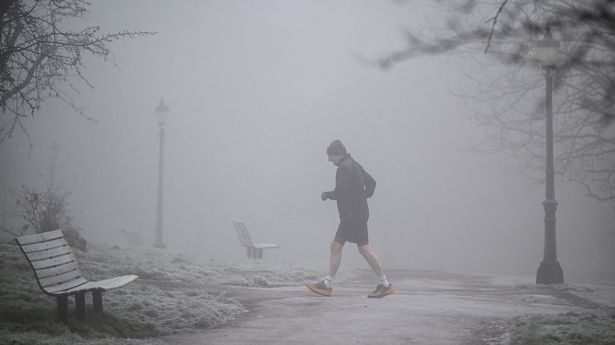As millions of Brits brace for worsening weather across the country, the Met Office has issued a yellow warning, highlighting dangerous conditions due to thick fog. With limited visibility, drivers are advised to be cautious on the roads, especially when it comes to knowing when and how to use fog lights. Failing to use them correctly could lead to accidents or even fines, making it crucial for motorists to be well-informed.
Understanding Fog Lights and Their Importance
Fog lights are a crucial safety feature designed to improve visibility during dense fog, heavy rain, or mist. These low-mounted lights emit a wide, bar-shaped beam that penetrates through thick fog much more effectively than standard headlights. They help other drivers spot your vehicle in adverse conditions and prevent accidents by improving visibility both in front of and behind your car.
However, fog lights should not be used casually. Unlike regular headlights, they are intended for specific weather conditions where visibility is severely reduced, generally to 100 meters or less. Using fog lights inappropriately, such as in clear or mildly foggy conditions, can dazzle other drivers and may even result in fines. It’s essential to know when their use is both necessary and legal.
When Should You Use Fog Lights?
According to UK law, fog lights must be used when visibility is severely reduced, typically defined as less than 100 meters. This can occur during thick fog, heavy rain, or snowstorms. Under these conditions, normal headlights or daytime running lights may not be sufficient to make your vehicle visible to other road users.
Here’s a quick guide to using fog lights:
- Front fog lights: These can be switched on when your view of the road is significantly impaired by fog or other hazardous weather. They should be turned off once conditions improve to avoid dazzling other drivers.
- Rear fog lights: Like front fog lights, rear fog lights are used to increase your visibility to drivers behind you. If the weather clears or you find yourself in stop-and-go traffic, make sure to turn them off to avoid causing glare for other vehicles.
Failing to adhere to these rules could result in fines up to £50 on-the-spot, making it crucial to switch them off once visibility improves.
The Yellow Weather Warning
The current yellow weather warning, issued by the Met Office, covers large parts of the UK and is expected to last through the week. The warning includes thick fog, heavy rain, and even frost in some areas, which could make road conditions treacherous. The visibility on some motorways is already significantly reduced, increasing the likelihood of accidents.
Drivers are urged to check their fog lights and ensure they’re ready to be used properly as the hazardous conditions persist. The Met Office has also advised motorists to take their time, reduce speed, and maintain a safe distance from the vehicle in front of them.
Safety Tips for Driving in Fog
Driving in fog can be daunting, especially when the weather takes a sudden turn. Here are some additional safety tips to keep in mind:
- Reduce speed: Fog reduces visibility, making it harder to see hazards in time. Slow down to give yourself extra time to react.
- Use low beams: High beams reflect off the fog, causing glare. Stick to low beams and your fog lights to improve your view of the road.
- Keep a safe distance: It’s harder to judge distances in fog, so leave plenty of space between you and the vehicle ahead.
- Stay focused: Stay extra alert for sudden changes in the weather or the actions of other drivers.
By following these guidelines and using fog lights appropriately, drivers can navigate through the dangerous weather more safely.



